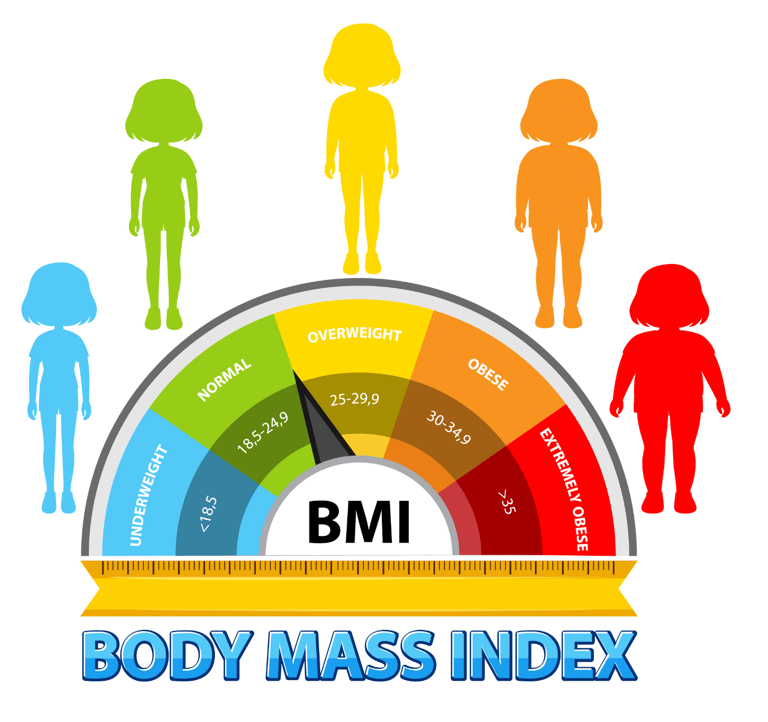Understanding Childhood Obesity: A Growing Concern
6/8/20234 min read


Obesity is not synonymous with being healthy, despite common misconceptions. The risk of obesity is continually rising due to changing lifestyles and a lack of exercise. Obesity, especially in children, is increasingly being recognized as a form of malnutrition, alongside other health concerns like undernutrition. While many continue to combat malnutrition, obesity in children has emerged as a significant issue, particularly over the past two decades. In countries with developed economies, obesity rates have climbed to 18-20%, and India is quickly catching up due to changing diets and lifestyles. Many parents mistakenly view obese children as "healthy," but in reality, this couldn't be further from the truth. Obesity is at the root of many future health problems, such as high blood pressure, heart disease, diabetes, and joint diseases.
Obesity: A Complex Issue, Not Just a Hormonal Imbalance
One of the first reactions many parents have when they notice obesity in their child is to suspect a hormonal imbalance, particularly a thyroid hormone deficiency (hypothyroidism). General practitioners often share this view. However, it's important to understand that obesity caused by internal factors, such as hormonal imbalances, is typically associated with stunted growth. If a child is overweight but their height is on track with their age, it's unlikely that hormones are the cause. The key to distinguishing this is to track the child’s growth using a growth chart over time. Many parents come with thyroid test reports showing moderately high TSH levels, which are often mistakenly interpreted as a sign of hypothyroidism. In fact, obesity itself can cause TSH levels to rise. The raised TSH is more of an effect rather than the cause of obesity. Ultimately, obesity is an imbalance caused by an imbalance between food intake and physical activity, rather than hormonal disorders.
What Causes Obesity in Children?
Obesity in children is becoming increasingly common, largely due to a combination of limited physical activity and poor eating habits. In urban areas, playgrounds are limited, and children often spend more time in front of screens, from television to various electronic devices. This sedentary lifestyle, combined with mindless snacking while watching TV, exacerbates the problem. Commercial food advertisements on television further influence children’s unhealthy eating habits, leading to overeating and poor nutritional choices.
Parents should avoid unnecessary worry about their children's diet but also avoid letting them eat unhealthy, non-nutritive food out of excessive concern. Forced feeding should always be avoided. Eating should be an enjoyable experience for the child, not a punishment.
Why Should We Be Concerned About Childhood Obesity?
Obesity in children is a significant risk factor for various health conditions that typically affect adults, such as:
Hypertension
Heart disease
Diabetes
Joint problems
Moreover, childhood obesity can lead to social and psychological challenges. Obese children are more likely to experience bullying or teasing from their peers, which can lower their self-esteem and impact their mental health. They may also be excluded from competitive sports, leading to a distorted self-image and emotional distress.
How Can We Combat Obesity in Children?
Foster Healthy Eating Habits from a Young Age: Parents should avoid becoming overly obsessed with their children’s food intake. Force-feeding is not the solution; instead, make mealtime a pleasurable experience that children enjoy. This helps establish positive eating habits and reduces the temptation for unhealthy substitutes or empty-calorie snacks. Avoid using food as a reward or comfort.
Regular Monitoring of Growth: The best way to detect potential health issues in children is by monitoring their growth regularly. A well-growing child, coupled with normal physical activity, is a good indication that the child is on the right track. Consistently measuring their growth on a growth chart can help detect obesity early, making it easier to intervene and address the issue.
Limit Screen Time: Excessive screen time, whether from televisions or mobile devices, should be minimized. A general guideline is to limit screen time to a maximum of 2 hours per day. Additionally, it is crucial to separate eating from screen time to prevent mindless snacking.
Encourage Physical Activity: Ensure that children get at least one hour of physical activity every day. This can include outdoor play, sports, or even family walks. Encouraging movement is essential for maintaining a healthy weight.
Lead by Example: Children often model their behavior on that of adults. As parents and caregivers, it is important to set a good example by making healthy food choices and engaging in regular physical activity. Teaching children about the negative effects of junk food and sugary drinks is vital for their long-term health.
Educate About Healthy Eating: It is our responsibility to educate children about healthy eating habits and teach them the disadvantages of junk food. During meals, ready-to-eat snacks, fast food, or sugary drinks with empty calories should not be used as alternatives.
Building Healthy Habits for Life
The foundation for a healthy lifestyle is laid in early childhood. Over-anxious parenting or excessive enthusiasm can often lead to unhelpful practices that might backfire later on. Teaching children to make good food choices, engage in physical activity, and monitor their growth regularly sets them up for success in the long run. Parents should remember that a healthy child is one who enjoys a balanced life—not one who is overburdened by extreme dieting or exercise routines.
In conclusion, combating childhood obesity requires a balanced approach that includes education, healthy lifestyle choices, and supportive family dynamics. By fostering an environment where children can thrive both physically and mentally, we ensure that they grow into healthy adults, free from the risk of obesity-related health issues.
EKTA INSTITUE OF CHILD HEALTH
Shankar Nagar Road,
Near Ram Mandir, New Shanti Nagar,
Raipur, Chhattisgarh - 492001
Ekta Institute of Child Health – a unit of Sparkle Hospital Pvt Ltd
